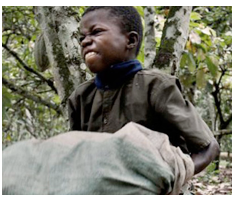HALLOWEEN WORDS-One Halloween, my husband persuaded our kids to give away most of the candy they’d just collected while trick-or-treating. They were preschoolers and the house we were renting then had previously drawn teens with haunted tours.
We’d run out of candy when a stream of teens showed up at our underwhelmingly spooky doorstep, shaking badly decorated pillow cases and looking disappointed.
Recycling the kids’ Halloween booty worked in that pinch. But candy consumption is sure to spike at my house this year, courtesy of the generosity the neighbors will show our pint-sized ghoul and devil. It probably will at yours too.
Americans down about 4 percent of their annual candy intake on Halloween — more than 14 times as much as on a typical day.
My husband and I curb what the kids can eat while they trick-or-treat, and then we quarantine the rest. They get nightly dessert rations for a while, and we throw out part of their haul.
It’s pretty common for little ghosts and witches to amass more lollipops and petite chocolate bars in one night of trick-or-treating than they can or should eat. We aren’t the only parents, mindful of the growing scourge of childhood obesity and the damage sticky sweets can do to a child’s teeth, who chuck piles of Halloween candy in the trash.
Others give it away. Some people sell surplus treats to dentists, who ship them by the pound to to the troops.
At the risk of sounding like some kind of elitist Halloween monster, I think that one reason we waste so much chocolate every time this holiday comes around is that it’s too cheap. A market correction is long overdue.
 What if U.S. consumers kept spending $20 billion a year on chocolate and bought a smaller quantity of higher quality? We might hand out smaller morsels too good to throw away.
What if U.S. consumers kept spending $20 billion a year on chocolate and bought a smaller quantity of higher quality? We might hand out smaller morsels too good to throw away.
Here’s the best reason for higher prices: child labor.
Despite years of activist pressure on Hershey’s, Nestlé, and other chocolate heavyweights, thousands of kids under 14 are still doing the tough work of harvesting cocoa beans. Most of the raw material required for chocolate comes from West Africa, the problem’s epicenter.
The cost of cocoa beans spiked this year, driven partly by the Ebola outbreak, even though the disease hasn’t crossed the Liberian border into top producer Côte d’Ivoire. Yet prices for the commodity remain around the same levels seen back in 1980.
Corrected for inflation, cocoa bean prices have fallen sharply since the time when the parents of today’s trick-or-treaters were disguised as Princess Leia or Luke Skywalker. Meanwhile, only 6 percent of what you spend on chocolate goes back to cocoa growers, down from 16 percent 35 years ago.
Those meager returns for growers give them an incentive to cut costs by any means possible — even making kids slice open cocoa pods with machetes when they should be learning or playing.
 Actually, many Americans already do pay more for chocolate. Premium sales are growing three times faster than the overall market, spurred partly by growing belief that the dark kind is good for your health.
Actually, many Americans already do pay more for chocolate. Premium sales are growing three times faster than the overall market, spurred partly by growing belief that the dark kind is good for your health.
“There’s an upgrading underway,” Lindt Chairman and Chief Executive Ernst Tanner declared in July after his European company purchased the quaint Russell-Stover brand to get a stronger U.S. foothold.
It’s such a booming business that The Hershey Company acquired the fancy Scharffen Berger label several years ago. Responding to consumer outrage, the gourmet line became certified “sustainable” in 2013. Among other things, that designation means the cocoa beans aren’t tainted by child labor.
Hershey has promised to get all its chocolate up to this standard by 2020. That means fewer kids will be harvesting cocoa beans in the fields so mine can collect packets of Reese’s Pieces from our neighbors.
Scharffen Berger’s precious little individually wrapped squares can clock in at more than 50 cents apiece. I doubt any of them will land in my kids’ plastic pumpkin baskets this Halloween. But I won’t complain if they do.
(Emily Schwartz Greco is the managing editor of OtherWords, a non-profit national editorial service run by the Institute for Policy Studies. This column was provided CityWatch by OtherWords.org)
-cw
CityWatch
Vol 12 Issue 86
Pub: Oct 25, 2014
{module [862]}
{module [662]}




